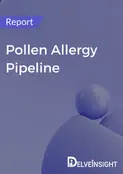Hay fever, or pollen allergy, is a seasonal condition caused when the immune system overreacts to pollen grains dispersed by plants. These microscopic particles, though harmless, are treated by the body as dangerous, triggering an inflammatory reaction. The series of events that occur—from environmental release to immune activation—can be described as the Pollen Allergy Pipeline. Understanding this pipeline makes it easier to see where prevention, management, and treatment strategies can intervene.
The journey starts with pollen production. Trees, grasses, and weeds release pollen into the air to reproduce. Wind carries these particles across large areas, while factors like humidity, storms, and heat waves affect how much pollen is airborne. Dry, breezy weather typically results in higher pollen counts, which explains why symptoms are often worse during such conditions.
Once pollen is floating in the air, it comes into contact with people through breathing or direct exposure to mucous membranes. In those who are allergic, the immune system interprets pollen proteins as harmful. Antigen-presenting cells capture the proteins and alert helper T cells, which then signal for antibodies to be produced. These antibodies, known as IgE, attach themselves to immune cells like mast cells. When the person encounters pollen again, mast cells respond by releasing histamine and other chemicals. This results in nasal swelling, mucus buildup, itching, watery eyes, and sneezing. Current Pollen Allergy Clinical Trials are examining new methods to interrupt these pathways.
There are several opportunities to reduce symptoms before they begin. Environmental measures are effective on a large scale. Planting low-pollen species in urban areas, creating vegetative barriers, and providing accurate pollen forecasts all lower overall exposure. On a personal level, individuals can reduce risk by wearing protective gear outdoors, using HEPA air filters indoors, and limiting outdoor activity during high pollen seasons.
Medications provide additional support. Antihistamines block histamine, decongestants ease breathing, and corticosteroid sprays reduce swelling in nasal passages. Immunotherapy goes further by slowly building tolerance to allergens over time. Researchers are also focusing on Pollen Allergy Emerging Drugs, which are designed to specifically target parts of the immune system involved in allergic reactions, offering the potential for more effective long-term relief.
New technologies are transforming allergy management as well. Pollen sensors, satellite imagery, and real-time tracking apps allow for personalized forecasts. Biotechnology is pushing forward with biologic therapies that block immune pathways, and efforts are underway to create genetically engineered plants with lower allergenicity. Leading Pollen Allergy Companies are investing in these solutions, driving innovation in both prevention and treatment.
Societal and policy initiatives also play a role. Schools and workplaces can improve indoor air quality, governments can regulate planting strategies to minimize allergens, and public health campaigns can raise awareness about practical steps for symptom control. These efforts add another layer to the broader system of Pollen Allergy Treatment.
The pollen allergy pipeline can be seen not as a fixed sequence but as a cycle. Each season generates new data on pollen levels and allergy patterns. This feedback guides further clinical research, informs environmental planning, and helps refine public health advice. Through cooperation across medicine, ecology, technology, and policy, strategies continue to evolve, offering patients better ways to manage symptoms and regain quality of life.
Latest Reports Offered by Delveinsight:
Cart-related Neurotoxicity Market | Eosinophilia Market | Interbody Cages Market | Mammography Devices Market | Moderate Psoriasis Market | Pelvic Organ Prolapse Market | Phenylketonuria Market | Skin Burns Market | Transfusion-dependent Thalassaemia Market | Cancer Vaccines Market | Cardiac Monitoring System Market | Celiac Disease Market | Desmoplastic Small Round Cell Tumors Dsrcts Market | Esophageal Cancer Market | Fetal And Neonatal Monitoring Devices Market Market | Gender Dysphoria Market | Her3 Market | Hernia Repair Devices Market | Neurofibroma Market | Non Alcoholic Fatty Liver Disease Nafld Market | Nosocomial Infections Market | Oxygen & Hyperbaric Oxygen Equipment Market | Parkinson’s Disease Market | Phototherapies For Psoriasis Market | Spinal Cord Stimulators Market | Tbi Market | Vascular Graft Devices Market | Vulvar Cancer Market
About DelveInsight
DelveInsight is a trusted provider of life sciences and pharmaceutical market research and consulting, offering actionable insights that empower organizations to make informed decisions. With a commitment to delivering strategic intelligence, DelveInsight serves as a key partner to global pharmaceutical, biotechnology, and healthcare companies looking to excel in an evolving market landscape.
Contact Us
Kanishk
Email: kkumar@delveinsight.com

